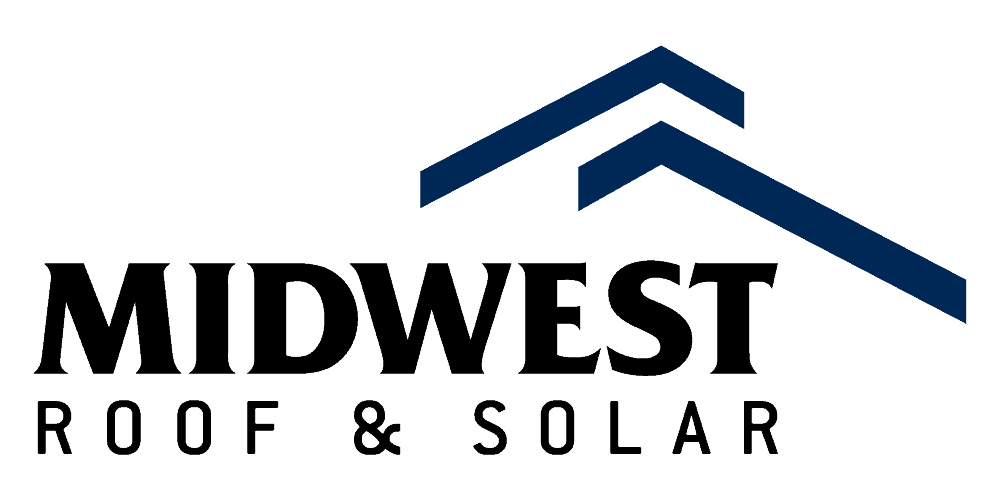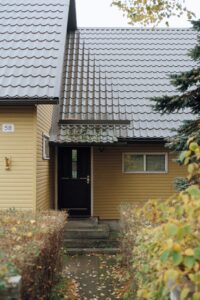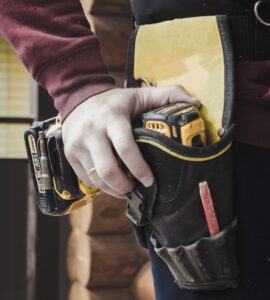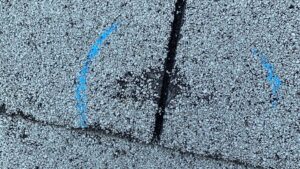Step back away from the home and look at the shingles on the roof. In some situations, you may notice that the shingles seem to no longer lay flat against the surface. They may even start to curl up at the edges. When this happens, it’s something to take a closer look at – and fix – as soon as possible.
An annual roof inspection is often a good way to pinpoint any risk of shingle damage. It allows a professional to inspect the roof to pinpoint any areas of concern that need to be repaired. That’s important because missing or lifting shingles expose the home’s structure to risk.
Why Do Shingles Lift and Curl?
Depending on your location, the age of the roofing material, and the overall maintenance it has had, there are numerous reasons why shingles can become deformed like this.
For example, in areas where there is high humidity, the asphalt shingles you are using may curl because of that heat and humidity. This causes the materials within the shingles to warp.
Buckling Shingles
Buckling shingles look like they are being pushed up from under them. They have a lift to them that is hard to see as it is just starting to form but becomes problematic as it worsens. This may happen for several reasons, but often it occurs because the attic space under the shingles is too hot. If there is poor attic circulation present, that will cause the shingles to pull away from the structure.
Sometimes, buckling shingles also occur because they were not installed properly. The installer may not have ensured they were flat against the surface by fastening them. Another concern could be that the shingles were not properly fastened into place, which can happen if the roofer is in a hurry or limiting materials used.
Curling Shingles
In other cases, you may notice the shingles seem to be curling, as in their edges are turning upwards. The center portion of the shingle may even look as though it is sunken in. This concave shape isn’t a good thing, but it can be common.
In some situations, curling occurs because the shingle itself is not properly designed, or it may be an inferior product that simply does not last. If the roof is older, curling is very common. It’s an indication that your roof’s lifespan is coming to an end, and a new roof may be necessary. This happens with normal wear and tear after time.
Common Causes of Shingle Damage
There are many types of damage that can be brought on by numerous factors, including the following:
Moisture
This is one of the most common causes of damage to shingles. When moisture gets into the roofing structure under the roof decking, this can lead to damage. If the shingles are buckling, that could be due to the shingles absorbing too much moisture. Heat and humidity are big factors in creating this significant moisture buildup, especially when there’s limited airflow in the attic space that creates the right combination of hot and moist air getting trapped behind the shingles themselves.
Multiple roofing layers
It’s not uncommon for roofs to have more than one layer of shingles. Sometimes, adding another layer is a lower cost method of getting a new roof. While this can be beneficial in some cases, it also presents an increased risk of potential damage to the roofing over time. If you install a newer roofing system over the top of an existing roof, that creates more space for moisture to build up. Also, there’s less structural integrity for the shingle to hold onto over time. As a result, the shingles may begin to curl and buckle.
Poor installation
For homeowners, this is a big concern because it is hard to know whether the roofer installed the shingles properly. That’s also a good reason to look for a certified roofer when installing a new roof. If the installation of the shingles is not done properly, this can cause them to loosen up. They could pull up from the surface or even fall off.
What to Do If You Have Damaged Shingles
If you spot areas of curling, buckling, or lifting shingles, don’t ignore it. Rather, you’ll want to act quickly to get them fixed to minimize any risk of ongoing damage to the roofing structure underneath. First, reach out to a roof technician to determine what the cause of the problem is.
In some situations, your roof could be under warranty. If that is the case, you may be able to get the roof replaced without a charge to you. Warranties differ from one company to the next. Also, if the damage is brought on by weather conditions or you have hail damage to the roof, you may be able to get your home insurance to cover the cost of replacement. However, this will depend on the underlying cause.
If you need a new roof
In situations where there is significant damage to your roofing structure, it’s important not to wait too long to get repairs. Look for the best quality product for your money and within your budget. For example, choose a higher-quality roofing shingle and ensure it comes with a long-term warranty to protect your investment. You may also want to ensure that you have a licensed and certified technician installing it to minimize risks.
It may also be important to avoid re-roofing or placing another layer of shingles over the top. Instead, let your roofer address all concerns, including proper moisture barriers, attic ventilation concerns, and structural inspections, to ensure your new roof has the ability to last a long time to come.
Properly installed shingles can last for decades and look great. If your shingles no longer look good and you’re noticing problems, act quickly to avoid moisture or air leaks that could make your home less comfortable and even damage the structural integrity of it. Turn to a roofer to learn more about your repair and replacement options.





